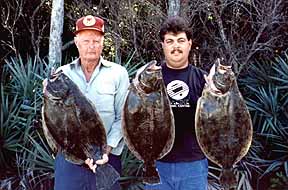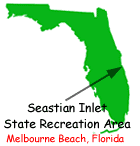

Accessibility
Florida State Parks are in various stages of accessibility, and are working to improve access to services and facilities. Should you need assistance to enable your full participation, please contact the individual park office as soon as possible. Sometimes as many as ten days may be needed to schedule a particular accommodation.
Hours of Operation
Florida state parks are open from 8 a.m. until sundown 365 days a year.
Pets
Pets are not allowed in camping areas, on bathing beaches, in concession areas and may be restricted in other designated areas of the park. Where pets are allowed, they must be kept on a six-foot, hand-held leash and well-behaved at all times. Service dogs are welcome in all areas of the parks.
State Park Guide
To discover and experience all of the Real Florida at Florida's 145 state parks, ask a Park Ranger where you can pick up a copy of the Florida State Park Guide, or call 850/488-9872.
PROGRAMS, ACTIVITIES, CONCESSION SERVICES AND SPECIAL EVENTS
A wide variety of topics are covered by the interpretive programs offered.
All programs are free of charge. For information and reservations call
(407) 984-4852. Two Volkssport Association 10K walking trails begin at
Sebastian Inlet. There is also a mile-long nature trail that leads through
a palm-oak hammock and a mangrove forest. The park concession offers guided
tours on the Indian River Lagoon aboard a 49-passenger boat. These ecotours
are narrated by a park ranger. Call (321) 724-5424 for information or
reservations.
Breakfast and lunch are offered at the food concession, which is open 8:00 a.m. - 6:00 p.m. Sunday through Thursday and 8:00 a.m. - 8:00 p.m. Friday and Saturday. Gifts, T-shirts and beach supplies are available at the gift shop. All your fishing needs, including licenses and rental equipment can be found at the Inlet Bait & Tackle shop. For more information and the latest word on what is biting, call the Inlet Bait & Tackle at (407) 768-6621 any time between 7:30 a.m. and 6:00 p.m.. The Inlet Marina offers short and long term slip rental, canoe, kayak and motorboat rental and basic boating supplies. For more information on the marina and equipment rental call (321) 724-5424 or visit their website
National and
local surf contests are held monthly, except June and July. The March
for Parks Walk-a-Thon is held every April. Make a reservation for a
chance to view a loggerhead sea turtle on a ranger led Turtle Walk program
during the months of June and July. Reservations for all June turtle
walk programs are taken on May 15, starting at 8:00 a.m.. For turtle
walk reservations and information on these and other special events
call (321) 984-4852.



 Every year over one-half million people enjoy Sebastian Inlet State Park. The beautiful park, situated on the tips of two barrier islands, is
surrounded by gorgeous water. The Atlantic Ocean is on the east, the Indian
River Lagoon to the west and the Sebastian Inlet flows between the two.
In 1971 the State of Florida acquired the land for a park. It is a favorite
spot for picnicking, swimming, surfing, fishing, shrimping, clamming, crabbing,
boating, snorkeling, scuba diving, bird watching, camping and enjoying nature.
Sebastian Inlet S.R.A. has something for everybody.
Every year over one-half million people enjoy Sebastian Inlet State Park. The beautiful park, situated on the tips of two barrier islands, is
surrounded by gorgeous water. The Atlantic Ocean is on the east, the Indian
River Lagoon to the west and the Sebastian Inlet flows between the two.
In 1971 the State of Florida acquired the land for a park. It is a favorite
spot for picnicking, swimming, surfing, fishing, shrimping, clamming, crabbing,
boating, snorkeling, scuba diving, bird watching, camping and enjoying nature.
Sebastian Inlet S.R.A. has something for everybody. Sebastian Inlet and the surrounding
waters provide fantastic Florida fishing for beach, river and inlet anglers.
Large catches are often made from the two jetties extending into the Atlantic
Ocean. Boat launch facilities provide access to nearby offshore fishing
and diving. Information on fishing regulations and salt water fishing licenses
is available at both entrance stations. Spearfishing is prohibited.
Sebastian Inlet and the surrounding
waters provide fantastic Florida fishing for beach, river and inlet anglers.
Large catches are often made from the two jetties extending into the Atlantic
Ocean. Boat launch facilities provide access to nearby offshore fishing
and diving. Information on fishing regulations and salt water fishing licenses
is available at both entrance stations. Spearfishing is prohibited.
 The central location of Sebastian Inlet’s
campground makes it a popular camping spot. It is a mere stone’s throw
from the inlet and a short stroll from the beach. All 51 campsites have
water and electrical hook-ups, a fire ring with grill and a picnic table.
Also available are full restroom facilities, a dump station, laundry facilities
and pay phones. Reservations are offered up to 11 months in advance. Camper
registration is from 8:00 a.m. until 10:00 p.m.. For camping information
and reservations call 1-800-326-3521 or stop by the camping registration
office located on the south side of the Sebastian Inlet.
The central location of Sebastian Inlet’s
campground makes it a popular camping spot. It is a mere stone’s throw
from the inlet and a short stroll from the beach. All 51 campsites have
water and electrical hook-ups, a fire ring with grill and a picnic table.
Also available are full restroom facilities, a dump station, laundry facilities
and pay phones. Reservations are offered up to 11 months in advance. Camper
registration is from 8:00 a.m. until 10:00 p.m.. For camping information
and reservations call 1-800-326-3521 or stop by the camping registration
office located on the south side of the Sebastian Inlet.  The history of the Sebastian Inlet
area goes back to the end of the last ice age. The barrier islands were
formed as sandbars off the coast of the mainland. As vegetation took hold
on the sandbars, animals moved in, followed by the first human inhabitants,
the Paleo hunters.
The history of the Sebastian Inlet
area goes back to the end of the last ice age. The barrier islands were
formed as sandbars off the coast of the mainland. As vegetation took hold
on the sandbars, animals moved in, followed by the first human inhabitants,
the Paleo hunters.


